Last updated on April 19, 2024
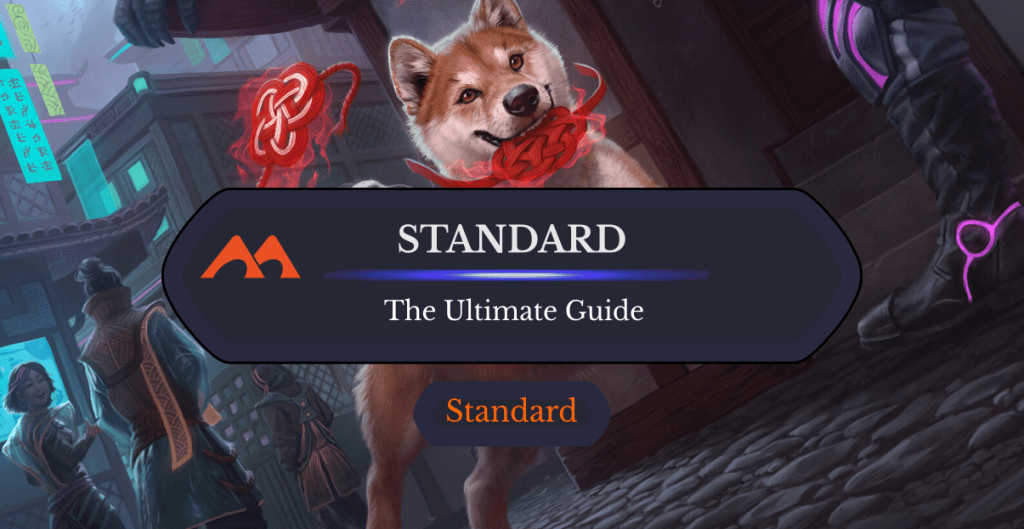
Spirited Companion | Illustration by Ilse Gort
It seems that everyone has their own opinion on the Standard format. Personally, I love it. I was raised on this format when I was learning how to play, and to this day it’s still one of my favorite formats to play.
Wizards of the Coast recently announced some large changes to Standard to try to revitalize interest in it since stores around the world have struggled to make it bounce back after the pandemic.
Let’s jump in and explore what is the Standard format and how it works now. Let’s get right to it!
What Is the Standard Format?
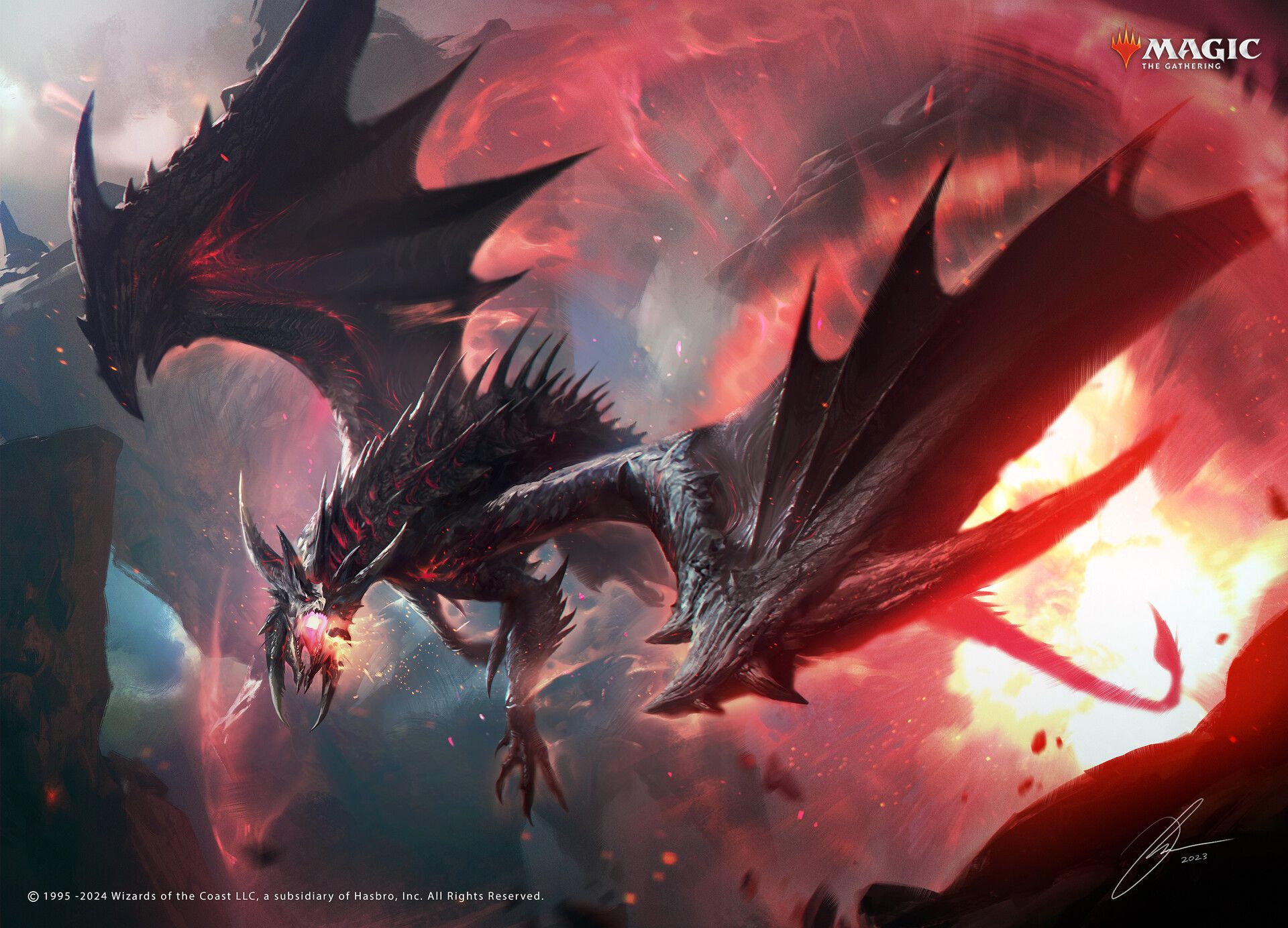
Terror of the Peaks | Illustration by Joshua Raphael
Standard is one of Magic: The Gathering’s flagship competitive formats. While every other format is defined by how many years’ worth of sets are legal, the sets legal in Standard change every three years. Only the most recent sets are legal in the format, which keeps the format fresh and interesting each year that you play it.
What Is the Purpose of the Format?
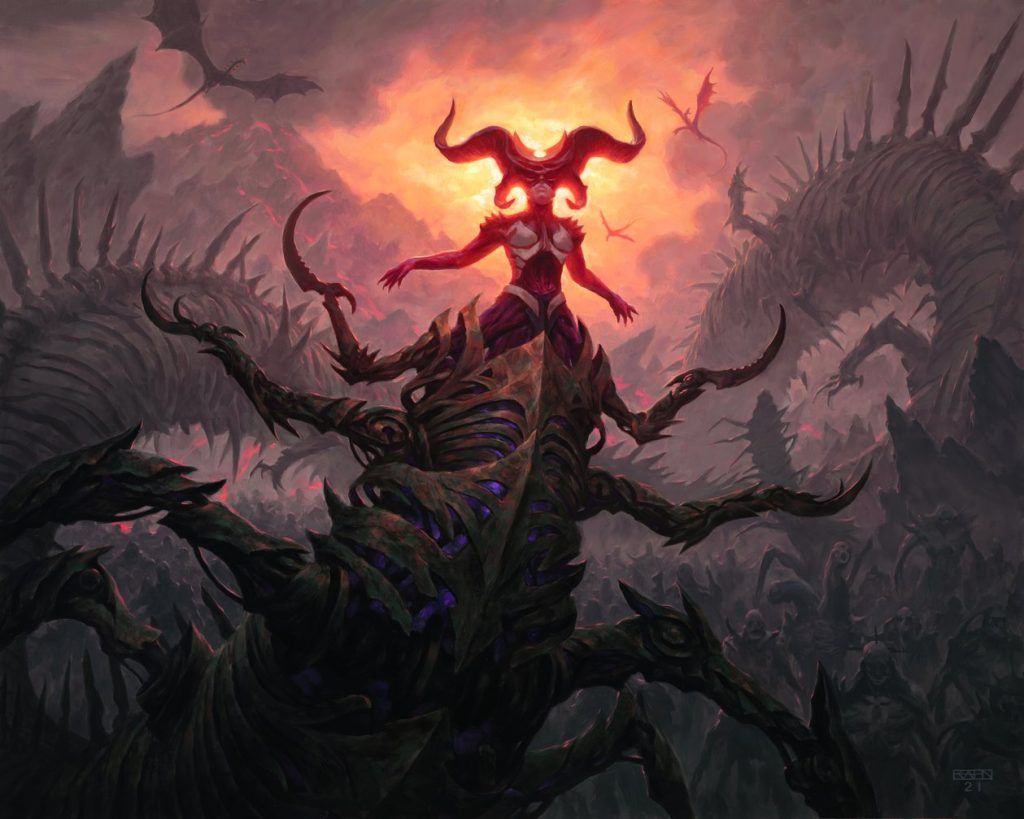
Sheoldred, the Apocalypse | Illustration by Chris Rahn
In my opinion, Standard is the bread and butter of competitive Magic. It’s the most popular format to play on MTG Arena, and when it works, it’s constantly evolving. A deck that wins an event one week is not necessarily the correct choice the following week. If you want to play competitive Magic, this is the best Constructed format for you to start with, especially as you’ll find plenty of Standard format qualifier events across both Magic Online and Magic Arena.
What Sets Are in Standard Right Now?

Boseiju, Who Endures | Illustration by Chris Ostrowski
As of right now, there are 13 sets legal in Standard. They are, in release order:
The 2023/24 sets began with Wilds of Eldraine in September 2023 and The Lost Caverns of Ixalan in November 2023, with Murders at Karlov Manor and Outlaws of Thunder Junction released in 2024. As per the updated Standard rotation rules, the next rotation will happen in later in 2024, when the 2024/25 sets begin and the 2021/22 sets rotate out.
Format Rules
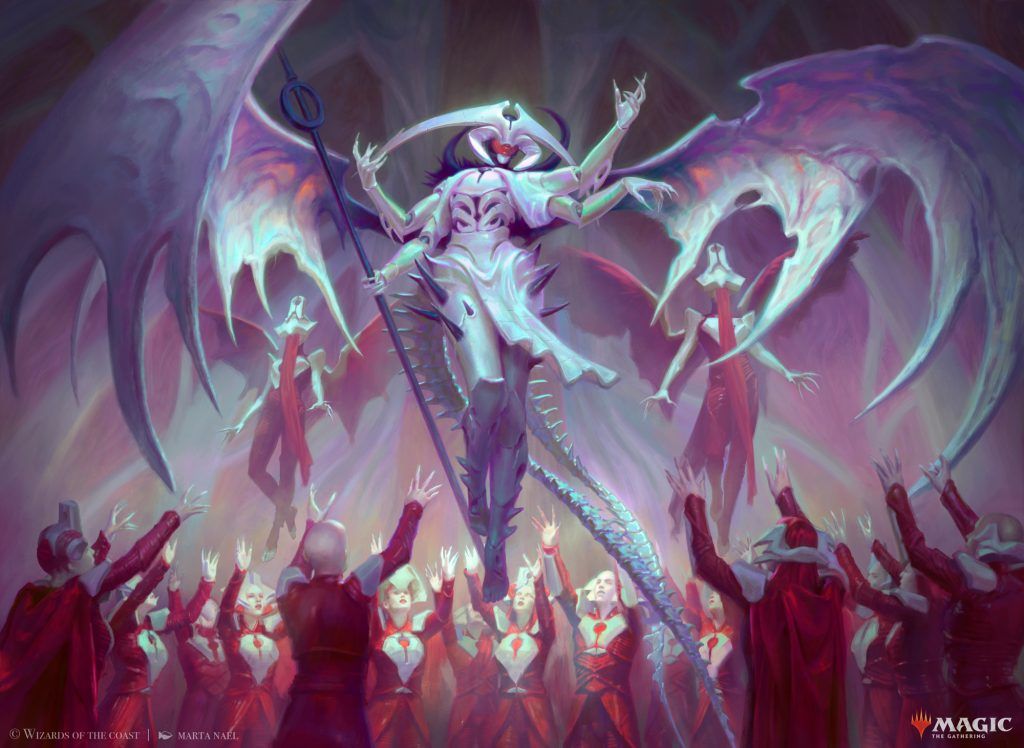
Atraxa, Grand Unifier | Illustration by Marta Nael
Standard follows all the normal rules for a one-on-one Constructed format. Your deck should consist of a main deck with at least 60 cards in it (let’s be honest, it should be exactly 60) and a sideboard of up to 15 cards. Across those 75 cards, you can’t use more than four copies of the same unique card, except basic lands. When playing a best-of-three match, you have the opportunity to switch cards between your main and side to improve difficult matchups for the next games. The cards that are legal for play change each year.
What Is Standard Rotation?
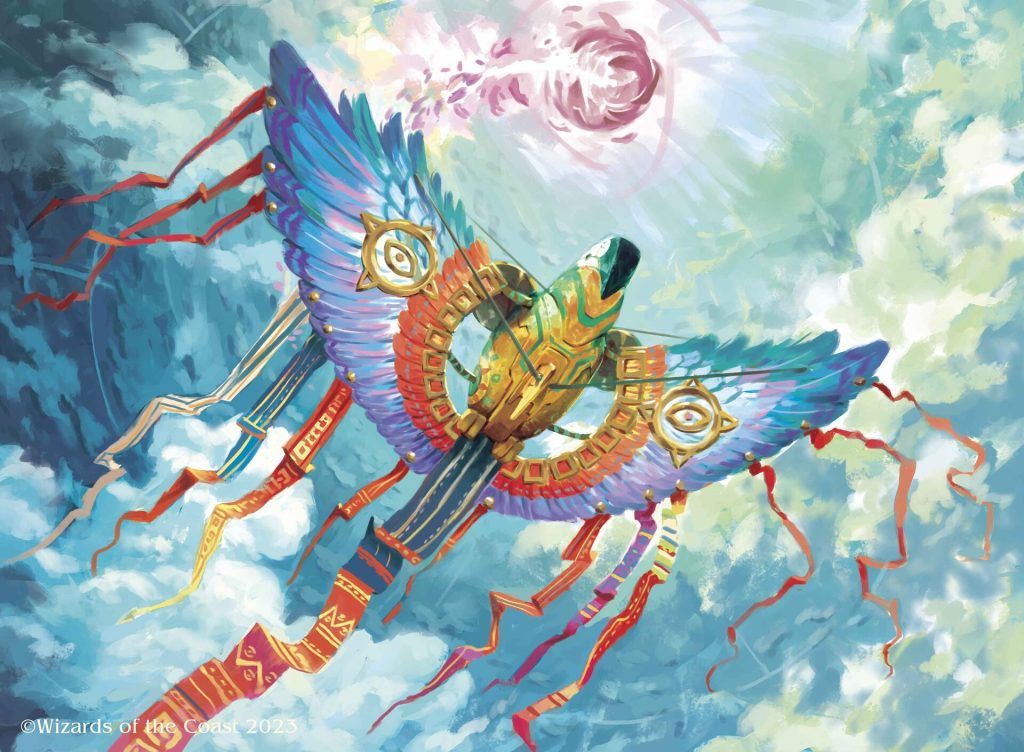
Sunbird Effigy | Illustration by Aldo Dominguez
Every year, the sets that are legal in Standard change during what’s called the Standard Rotation. Each year, from fall to mid-late Spring, there are four Standard sets released (the past year had five due to the addition of March of the Machine: The Aftermath).
When Standard rotates going forward (starting fall 2024), three full years of sets will be legal (which should be 12 sets). As we begin the fourth year, the oldest year rotates out, bringing the number of legal sets down to nine. Bear in mind that March of the Machine: The Aftermath is an odd set that messes with these numbers until it eventually rotates in 2025.
Banned Cards in Standard
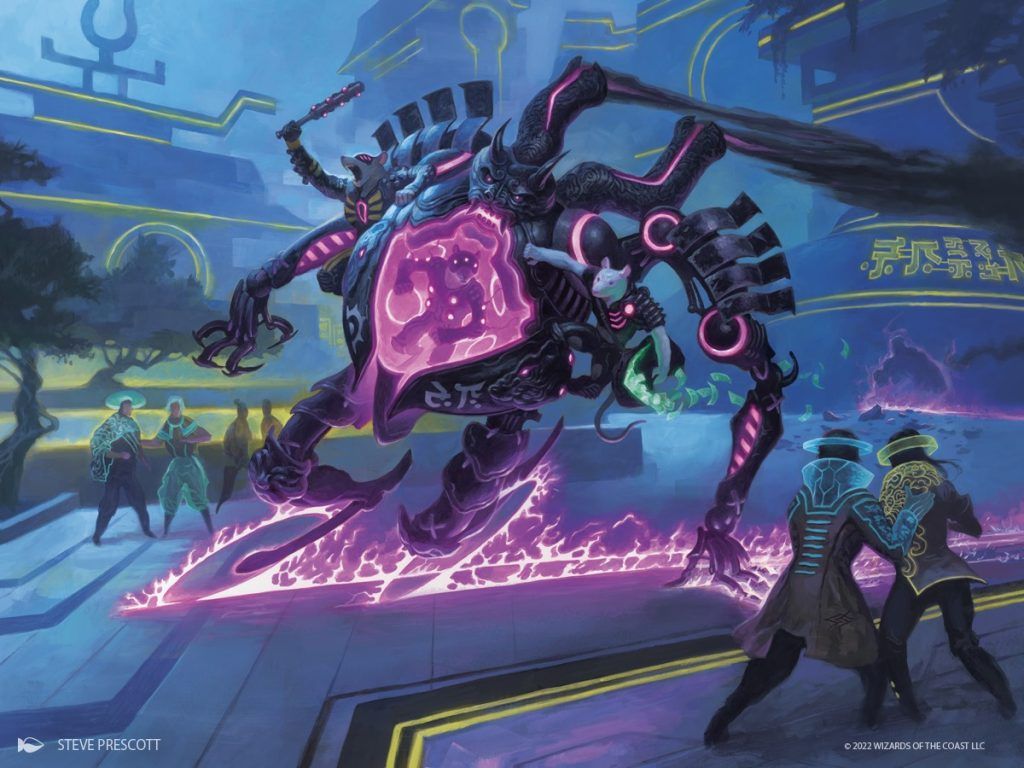
Reckoner Bankbuster | Illustration by Steve Prescott
There are currently four cards banned from play in Standard:
Over the years, WotC has largely opted to not ban cards in Standard. All sorts of problematic cards over the years could have been hit, but only the worst offenders like affinity in the Mirrodin era and Caw-Blade in 2011 were bad enough to receive bans. With MTG Arena added into the equation, more people are playing Standard than ever before, and a lot more data can be collected about the format. Given that, Standard bans have been more common in recent years, especially with Throne of Eldraine being as powerful as it was.
With the changes made to Standard, WotC reiterated their commitment to ban problematic cards if they break the format like Oko, Thief of Crowns and Omnath, Locus of Creation have done in recent years. They have also committed to reviewing the banlist on an annual basis with a particular focus on cards that have been in the format for a while and are perhaps becoming stale, which was the main reason for their most recent ban list.
Where to Play Standard?
MTG Arena
I’ve mentioned already that Standard is one of MTG Arena’s most popular formats. This is largely because there are only a few format options on the platform, but still, there’s no better place to play the format. There are a bunch of great in-game events and Pro Tour Qualifiers, and you can always jump on the ladder and play whenever you want.
Magic Online
Magic Online’s leagues are a great way to play Standard against some exceptionally strong players without having to work your way up to the diamond or mythic ranks on Arena. You also have the weekly challenge events for a real test. You can win real rewards through these events by selling the prizes you get, so if that’s something that appeals to you then this is a great way to play the format.
Paper/IRL
This is of course not going to play well for everybody, and it depends entirely on whether stores in your area run Standard events or if you can find friends who want to play the format with you. It can be difficult to keep up with Standard set releases, which makes it hard to maintain a collection for the format. But it’s not impossible, and some smart trading can make it a lot easier to keep up with the new releases. If your local store(s) run events, like I do at mine, they can be very enjoyable to see how your local metagame evolves from week to week.
Where to Find Standard Decks
Whether building a deck is a strength of yours or not, looking at winning decks is an important resource. You can use decklists for inspiration and to scout the kinds of decks you’ll be playing against.
Arena Tutor
Have you used Draftsim’s Arena Tutor yet? If not, I highly recommend it. Among a litany of great features is the metagame tab, which gives you a look at what other decks are in the format and you can see how those kinds of decks are performing in the format.

Magic.gg
Magic.gg is the official Wizards of the Coast website for everything about competitive Magic. It features details for upcoming Pro Tours and Arena Championships, coverage of those events, and most importantly, decklists. Not just decklists for these professional events, but also for regional championships around the world as well as lists pulled directly from MTG Arena. It’s an excellent source for great decklists.
MTGGoldfish
Saffron Olive is known as one of the biggest personalities in the world of Magic streaming. His very own platform, MTGGoldfish, is a great source for decklists in a variety of formats, largely pulling from Magic Online and a variety of competitive tournaments from around the world.
What is the Best Deck in Standard?
Since Wilds of Eldraine debuted in the fall of 2023, Standard had several changes to the format. Weirdly enough, the format has gone full circle and one of the best decks from 2022 is back to being one of the top contenders. Going into the September 2023 World Championships, Esper Midrange was the deck to beat. Curving pretty much any two-drop into Raffine, Scheming Seer on turn three is a pretty ridiculous curve, but then following that up with Sheoldred, the Apocalypse and The Wandering Emperor lets you close out games against near enough anything in the format. Esper even got a huge upgrade from The Lost Caverns of Ixalan, as Deep-Cavern Bat has usurped all of the two-drops this deck used to play. This is a deck that has a solid matchup against everything in the format but doesn’t necessarily have any one-sided matchups, as is fairly typical for midrange decks.
Standard’s other big contender, in my opinion, is a deck that debuted at this same World Championships in the capable hands of hall-of-fame players Reid Duke, Gabriel Nassif and Seth Manfield: Domain Ramp. By accelerating your mana with Topiary Stomper and Invasion of Zendikar, you can play absurd bombs like Atraxa, Grand Unifier and Archangel of Wrath and dominate the board. Better yet, with both of these creatures being angels that require every color to be played, Cavern of Souls slots right into the version we saw at Worlds.
However, what is Standard’s “best” deck? Well, according to our own Arena Tutor, the Standard decks with the highest win rates on Arena are Azorius Aggro and Mono Red. Wedding Announcement is one of the best cards in the format and pairing that with a solid curve and Make Disappears is a good gameplan. Subterranean Schooner is also a great card that has made waves (pun definitely intended) since coming out in The Lost Caverns of Ixalan and it slots perfectly into this deck.
Mono Red has a large share of the metagame. Being aggressive is a very good idea in a format where your opponents are trying to make games go long. Neighbor Boros Aggro also got big upgrades from Murders at Karlov Manor, with reprints of Shock and Lightning Helix, along with a functional reprint of Thraben Inspector in Novice Inspector.
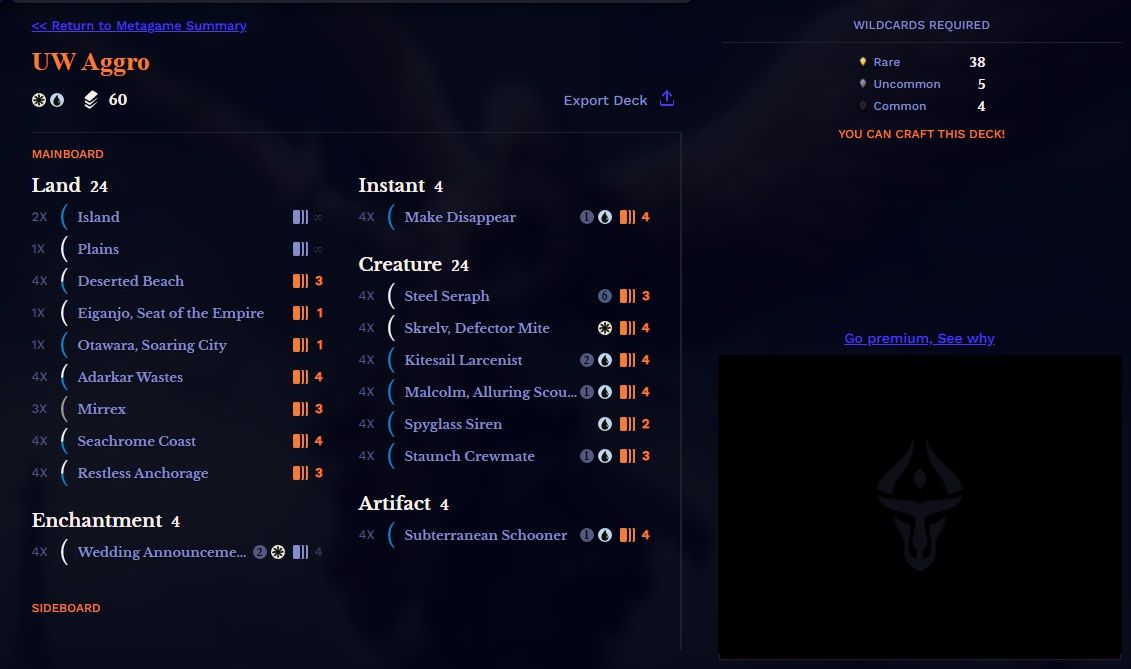
Standard Products
Standard is quite well supported by WotC. After all, while the various supplementary products they release are designed for all sorts of different formats, each year’s four main sets are specifically designed with Standard in mind. If you want to build up a collection of Standard-legal cards, you can jump into any of these Standard sets to get a foothold.
Previously, WotC released challenger decks which are complete decks, sideboard included, ready to play right out of the box. While they didn't release any in 2023, and don’t usually include lots of pricey staples, they do include playsets of important staple cards at every rarity. These are usually very good quality. The main critique is that they usually come out five or six months before a rotation, which often means they’re quickly obsolete or non-legal for Standard. But hopefully the larger three-year format design helps with future releases of these products.
Standard Communities
If you’re looking for an online community to discuss the Standard format, there are lots of options for such a thing. The first thing I’d look for is my LGS. Many local game stores around the world operate online communities through social media, Discord, or other such channels. Joining such a community has the obvious advantage of letting you get to know the players at your store. If your local store runs Standard events, it’s possible their online communities can also be used for discussion of the format.
With Standard being so popular on MTG Arena, lots of online streamers play it. As such, their personal communities often have Standard discussions. Especially as a way of discussing decks or showing Arena gameplay from their channels. I’m not going to give any ideas on this since there are so many and everyone likes different kinds of players and streamers, so all I’ll say is to browse the best available channels on Twitch and see who takes your fancy.
Of course, you’re reading this article on Draftsim.com and we have our own Discord for you to engage with. We have a dedicated section for discussing the Standard format and you’re very welcome to join us!
What Is Standard BO1 on MTG Arena?
On MTG Arena, best-of-one (or BO1 for short) formats are very popular, as opposed to the traditional best-of-three format that is commonplace in live events. This is to make games a lot quicker. The main difference is that because you don’t get to use your sideboard, you’re much weaker against your bad matchups. Faster and more aggressive decks are much more widely played as a result. Control decks rely on their sideboards more, so they see less play here. For the sake of cards that use the sideboard, like Invasion of Arcavios, you get to assign a 7-card sideboard, but otherwise, it doesn’t come into play.
What’s the Difference Between Standard and Modern?
There are three main differences between Standard and Modern:
- Standard rotates annually and Modern doesn’t rotate at all.
- Standard has a maximum of 12/13 sets legal at once while Modern has over 20 years’ worth of sets legal and counting.
- While both formats have ban lists, Standard’s is always quite small and Modern’s is nearly 50 cards and much more likely to grow than shrink.
Other than that, the formats share the same rulesets regarding deck construction and gameplay.
What’s the Difference Between Pioneer and Standard?
There are three main differences between Standard and Pioneer:
- Standard rotates annually and Pioneer doesn’t rotate at all.
- Standard has a maximum of 12/13 sets legal at once while Pioneer has over ten years’ worth of sets legal and counting.
- While both formats have ban lists, Standard’s is always quite small, and Pioneer’s is about 25 cards. Rarely are more cards banned, but even more rare are unbans.
Other than that, the formats share the same rulesets regarding deck construction and gameplay.
Wrap Up

Bloodthirsty Adversary | Illustration by Heonhwa Choe
I know everyone in Magic likes to voice their opinion when it comes to Standard, but I find that when you set that aside and genuinely play the format for yourself, you can have a ton of fun. At the end of the day, that’s what really counts.
If you liked this article, please follow us on Twitter and join our Discord server too. Share the article with your friends and help drive the conversation further.
Until next time, take care of yourselves!
Follow Draftsim for awesome articles and set updates: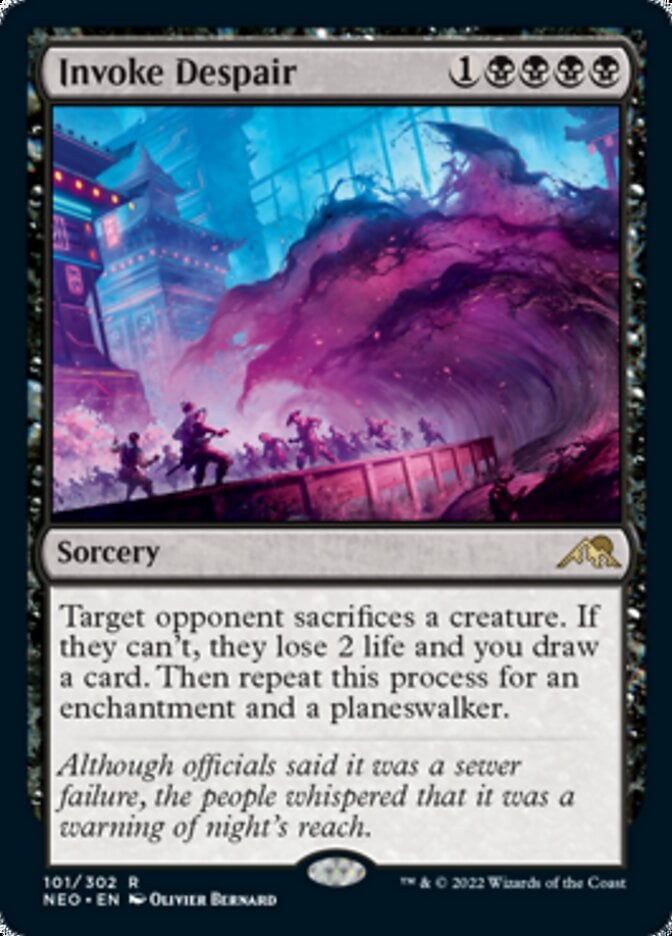
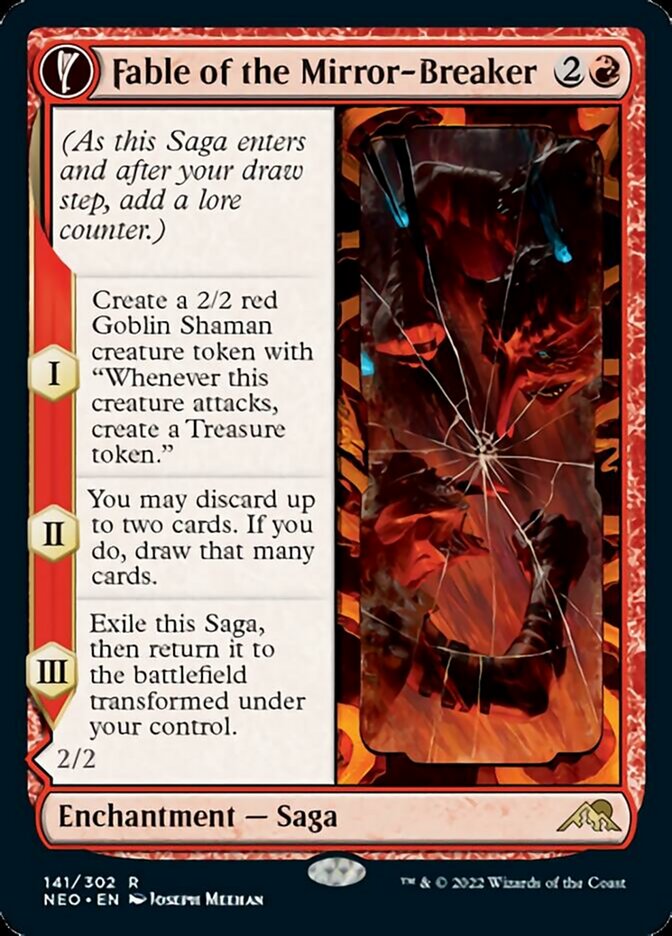
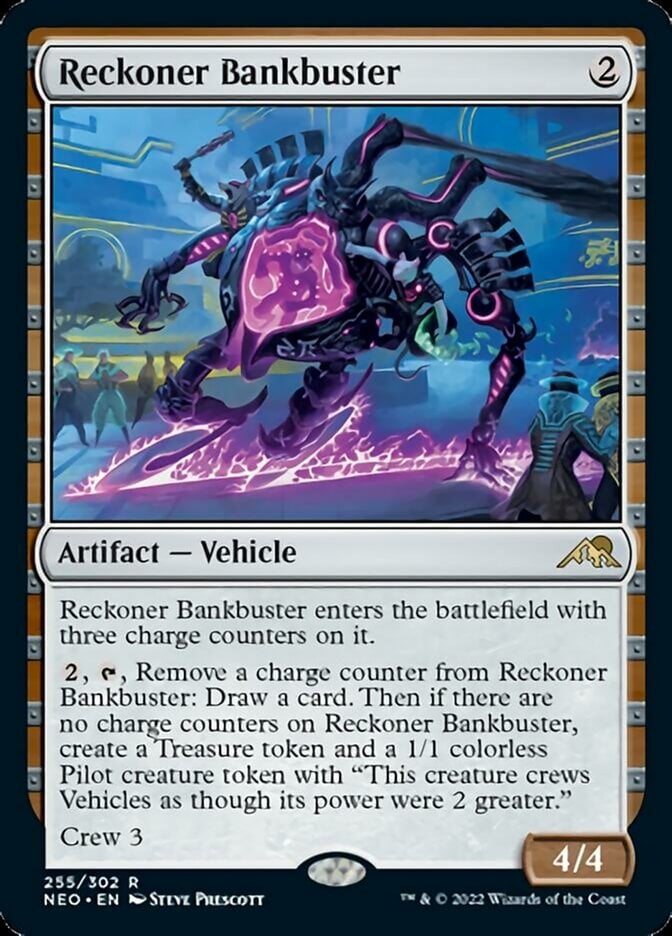
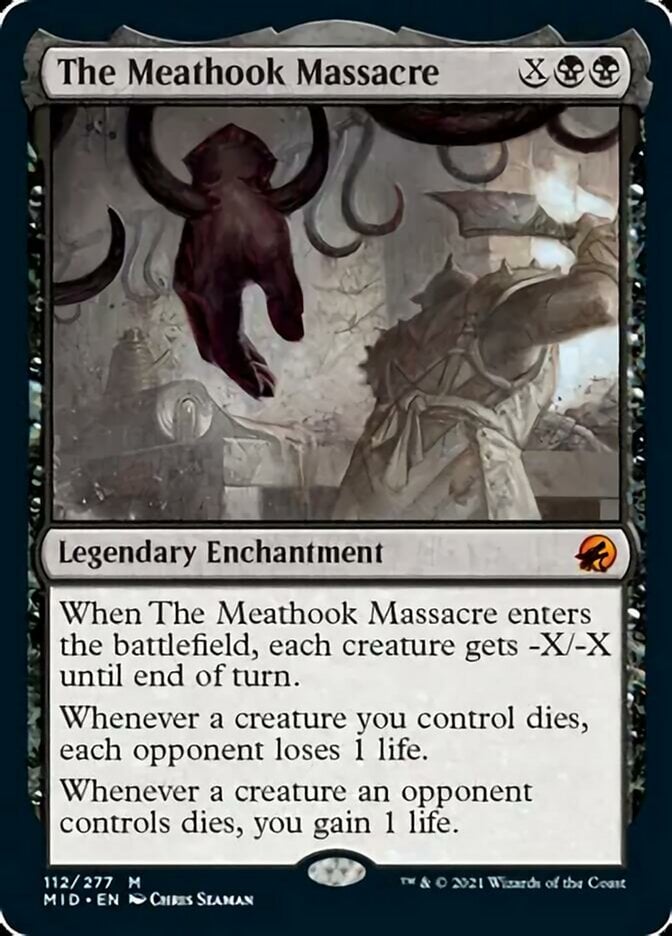
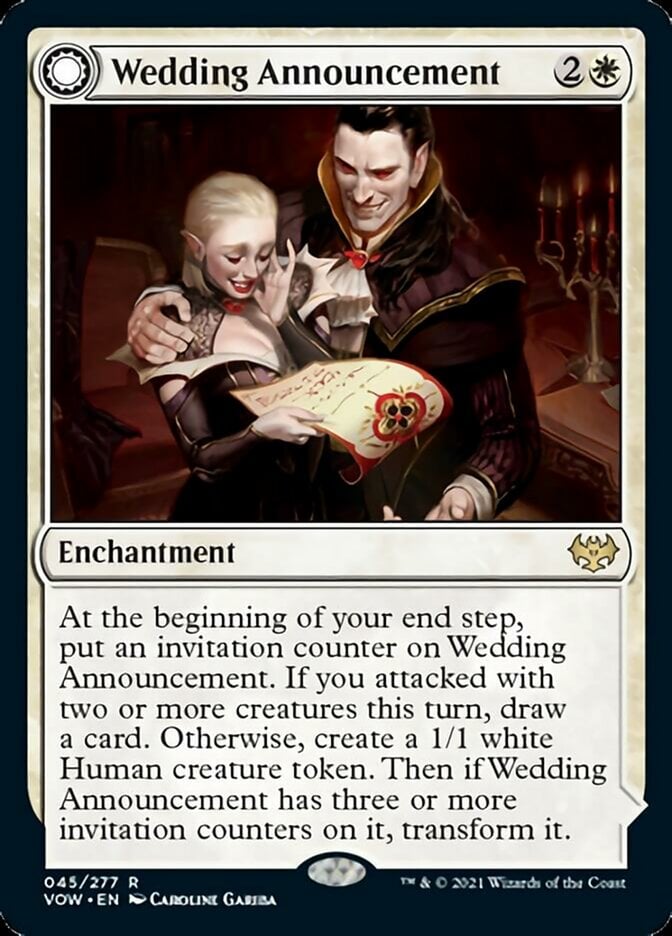
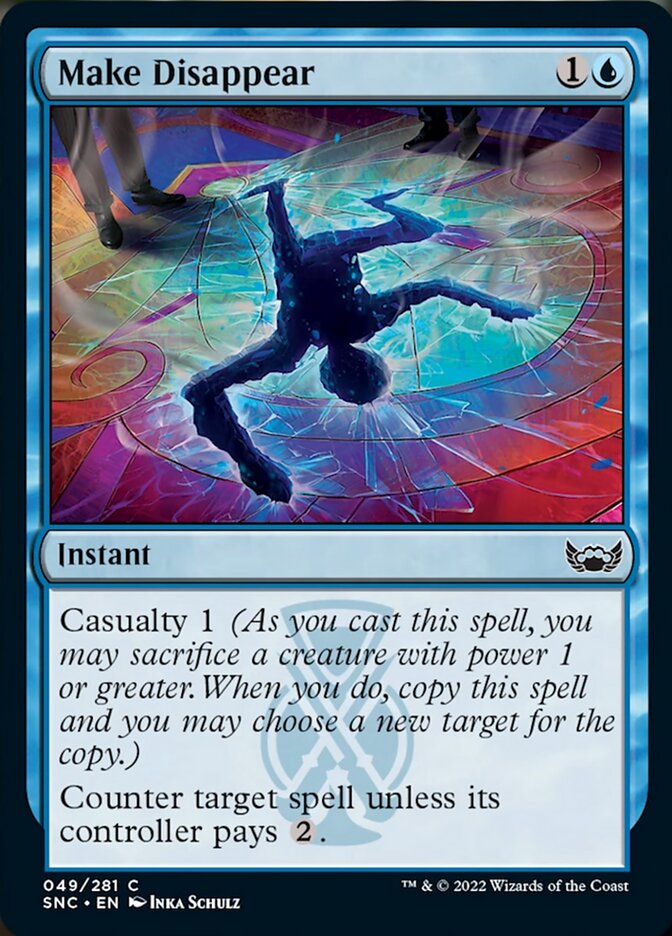
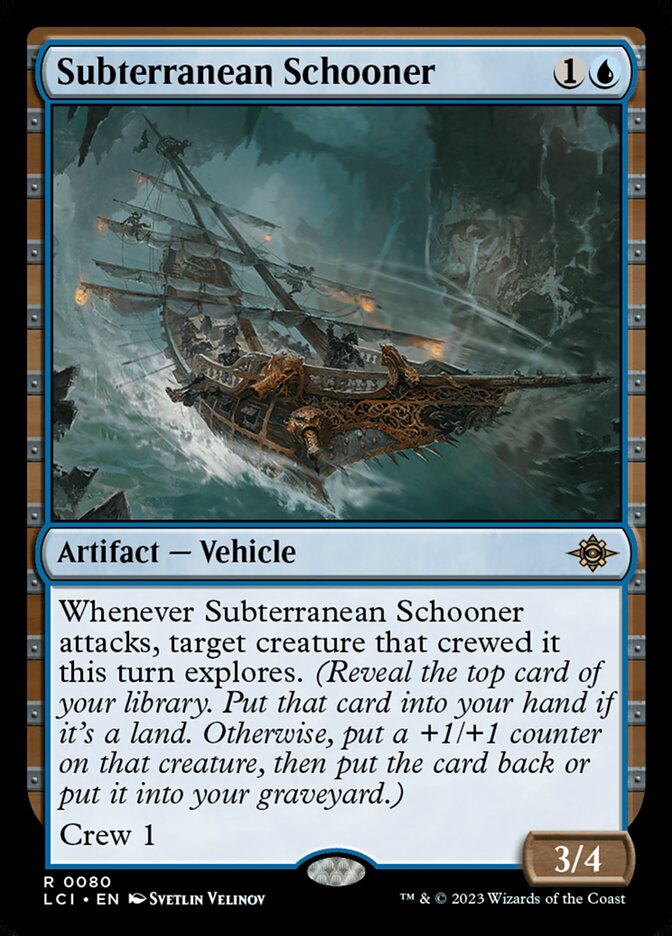
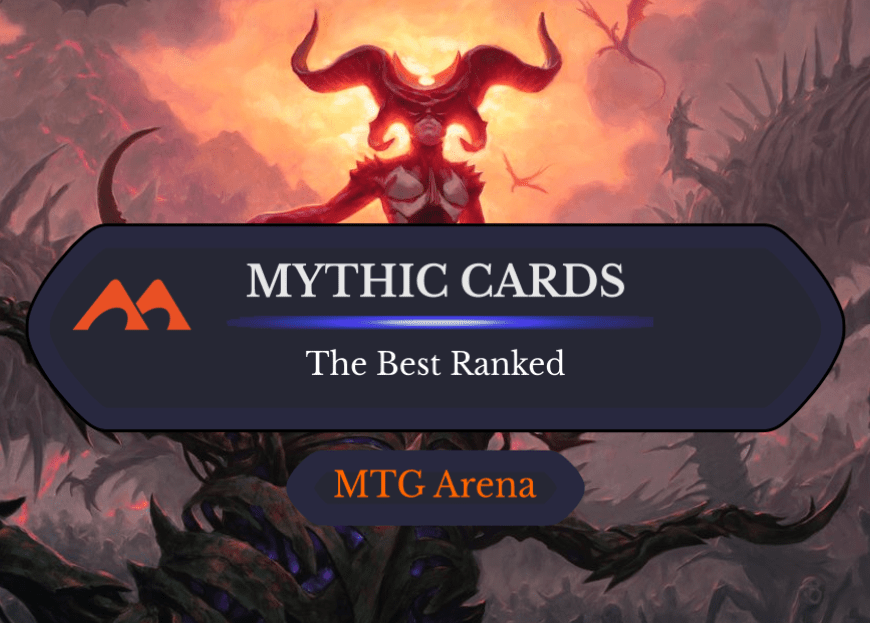
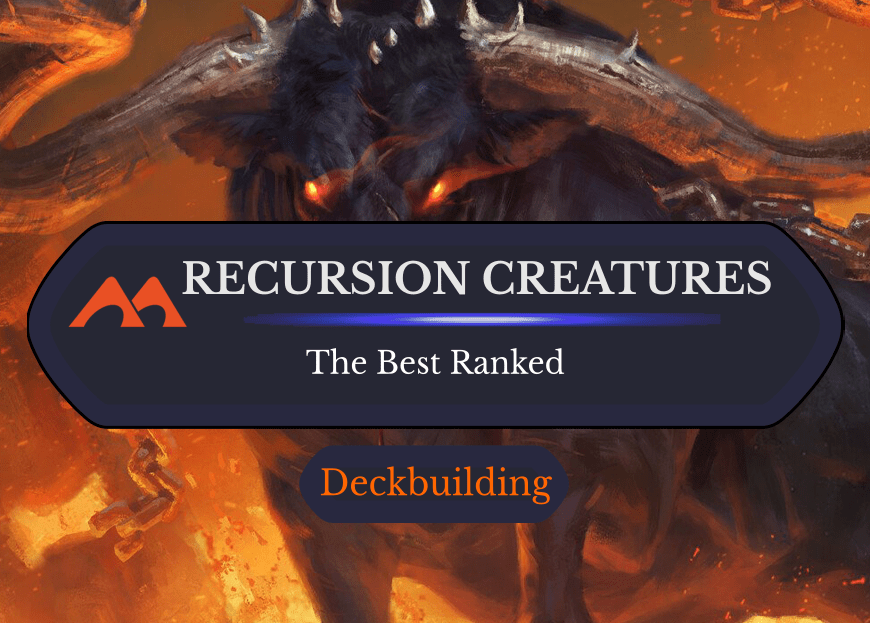
Add Comment